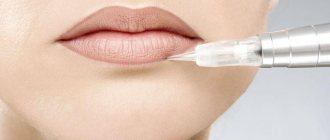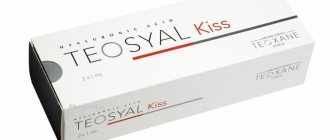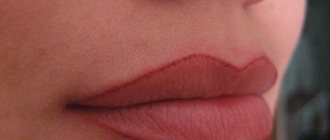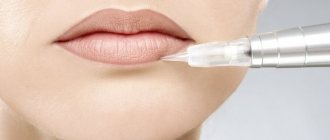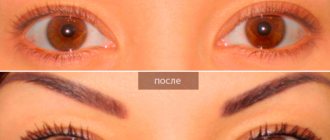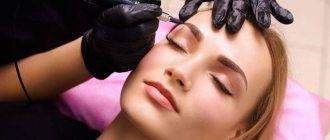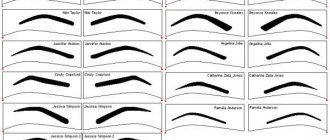November 29, 2021
199
Cosmetology involves performing various procedures that require pain relief. To do this, patients are injected or applied anesthetic drugs. Most solutions used today are non-invasive. In other words, they do not need to be injected under the skin. This is necessary to eliminate any discomfort.
General anesthesia
Anesthesia or general anesthesia is a procedure in which a person is put into a special state - the body does not react to external stimuli, one of which is pain. General anesthesia is performed using anesthetics that act on the central nervous system.
General anesthesia is given if there is a need to perform surgical procedures. The technique has a high level of complexity, so an anesthesiologist accompanies the operation. It calculates the correct dosage for a particular person. The well-being and even the life of the patient depends on it.
As a rule, local anesthesia is often used for aesthetic cosmetology, and anesthesia is done in rare cases, for example, if it is necessary to do deep peeling.
Anesthesia is perceived ambiguously by people. So, some are sure that anesthesia shortens life by several years. There is also a myth that says that drugs of this type make a person mentally ill. However, such statements are incorrect. Of course, risks exist, as in other areas of medicine, but experienced doctors can minimize them. Possible side effects include dizziness, headache, diarrhea, and vomiting.
The demographic situation in the world entails the emergence of a complex of economic and social problems caused by the changing role of older people in society. The creation of new means and techniques that help increase the duration of a person’s active life while maintaining basic physiological functions is one of the pressing problems of aesthetic medicine [1]. Cosmetology primarily involves preserving and improving appearance, preventing aging of the face and body, and rejuvenating programs without surgical intervention. The emergence of high-tech methods that make it possible to correct involutional changes in the skin, and the tendency to move from the use of non-invasive manipulations to more invasive techniques have made it possible for cosmetologists to successfully carry out anti-aging procedures, less often resorting to plastic surgery [2]. Most invasive procedures performed require preliminary anesthesia. Therefore, an urgent problem is the choice of anesthesia method for cosmetic interventions.
As a rule, local anesthesia is used in cosmetology, which includes application (superficial, topical, terminal), infiltration and regional [3]. Superficial anesthesia occurs when the local anesthetic comes into direct contact with tissue. With infiltration anesthesia, a local anesthetic is injected into the surgical area intradermally with a thin needle, which blocks the conduction of nerve impulses in the deeper layers of tissue. Regional anesthesia is based on the administration of a local anesthetic in close proximity to the nerve trunk innervating a specific area, and can be conductive, spinal, epidural or intravascular. More often, cosmetologists use superficial and infiltration anesthesia. The use of injection methods of anesthesia is not always justified, especially when there is a large number of elements to be removed, a large area of the treated surface, etc. Injection of anesthetics leads to rapid swelling and compression of blood vessels, which modifies the clinical picture, disrupting the visualization of blood vessels. These features make it difficult to perform injection contouring, laser and photocoagulation of benign vascular neoplasms and other cosmetic procedures. Also, injection methods are unsafe from the point of view of toxic effects. Severe and sometimes fatal toxic effects on the central nervous (CNS) and cardiovascular systems can occur with significant overdose of anesthetics. This occurs when large doses of anesthetics are inadvertently released into the systemic circulation [4]. Therefore, the safest method in the practice of a cosmetologist is the application method. This method best meets the requirements of a cosmetologist for anesthesia, since it has a minimal traumatic index, causes a small number of visible side effects, and provides the opportunity to carry out a one-step complex correction in a short time.
In cosmetology, any manipulation associated with violating the integrity of the skin barrier is performed with anesthesia to reduce the pain of the procedure. Invasive procedures include laser and radio wave destruction, electrocoagulation of benign neoplasms, mesotherapy, injection contouring, administration of botulinum toxin A, hair removal, especially in areas with thin sensitive skin (bio- and electrolysis, laser and photoepilation), derma-abrasion, skin graft transplantation , puncture biopsy.
Structure and properties of local anesthetics
All local anesthetics have a similar chemical structure. They consist of a hydrophobic (lipophilic) aromatic group, a hydrophilic (secondary or tertiary) amino group, and an intermediate ester or amide chain. Depending on the type of intermediate chain, local anesthetics are divided into esters and amides (Fig. 1).
Rice. 1. The structure of local anesthetics.
Local anesthetics of the ester group include novocaine (procaine), benzocaine (anesthesin), tetracaine (amethocaine), etc. Amide anesthetics include lidocaine (xylocaine), prilocaine, mepivacaine, bupivacaine, ropivacaine, etc. Between these two groups There are important differences between local anesthetics. Esters are relatively unstable in solutions and are quickly hydrolyzed in the body by cholinesterase and some other esterases. One of the hydrolysis products is para-aminobenzoic acid, which is a common cause of allergic reactions. In contrast, amides are relatively stable in solution and are slowly broken down by liver amidases. In addition, hypersensitivity reactions to anesthetics of the amide group develop extremely rarely [4].
The chemical structure of local anesthetics determines their physicochemical characteristics and clinical properties (Fig. 2, 3).
Rice. 2. Properties of local anesthetics [4].
Rice. 3. Physico-chemical and pharmacological effects of local anesthetics [4].
When working with anesthetics, it is important for cosmetologists to know how quickly a particular drug will act, what the strength of anesthesia will be, how long the effect will last and what risks the presence of a particular component in the composition carries. There is a correlation between the lipid solubility of an anesthetic and its potency, which reflects the ability to penetrate the perineurium and neuronal cell membranes to reach the point of action in the axoplasm.
Binding to tissue proteins affects the duration of action of local anesthetics. For example, procaine binds weakly to proteins and its effect is short-lived. Lidocaine and prilocaine are moderately protein bound and have an average duration of action [4].
The dissociation constant (pKa) is the most important factor affecting the rate of onset of the effect. Low pKa values indicate rapid development of the reaction. For example, a reaction to lidocaine will develop faster than to tetracaine. The closer the pKa is to the physiological pH, the higher the concentration of the non-ionized fraction that penetrates the neuron membrane, the faster the local anesthetic begins to act. Having entered the cell, some of the molecules are ionized until a new equilibrium state is reached between the ionized and non-ionized fractions. Only ionized cation molecules interact with receptors in sodium channels. The degree of ionization of the anesthetic is of great clinical importance. For example, when it enters tissue with a low pH (for example, an inflammatory process at the injection site), the concentration of the ionized fraction of the anesthetic increases, and it takes more time for the effect to develop. However, other factors, such as the dose and final concentration of anesthetic in tissues, can also influence the rate of blockade development [4].
Effects on different sensory modalities
Local anesthetics reversibly block the conduction of nerve impulses in peripheral nerves and nerve endings. After the administration of the anesthetic, pain sensitivity first disappears, then temperature, tactile and proprioceptive [4]. Anesthetics used for topical anesthesia often do not lead to loss of tactile sensitivity, which does not indicate their ability to block pain sensitivity.
Systemic action of local anesthetics and influence on the inflammatory response
Since sodium channel blockade affects the propagation of action potentials throughout the body, it is not surprising that local anesthetics can produce systemic toxic effects. In addition to the side effects that are characteristic of all local anesthetics, there are also individual ones that are characteristic only of certain drugs.
Local anesthetics are characterized by a two-phase effect on the central nervous system. If they are not introduced too quickly, early symptoms appear first, then later, more severe ones. Low doses of lidocaine (2-4 mg/kg) have an anticonvulsant effect and are used to treat status epilepticus, but after administration of large doses, CNS excitation develops. As the concentration of local anesthetic in the plasma increases, numbness of the tongue and mouth, dizziness, blurred vision, slurred speech, muscle twitching and tremors, restlessness and confusion of speech are observed. If the concentration of local anesthetic in plasma exceeds a critical level (for lidocaine - 9 mcg/ml), a grand mal seizure may develop.
The dual effect of local anesthetics occurs when affecting the cardiovascular system. Low doses of lidocaine can eliminate some types of ventricular arrhythmias. An overdose of local anesthetics can cause profound arterial hypotension, bradycardia, bradyarrhythmia, and even cardiac arrest. Typically, cardiovascular complications develop after the onset of neurological syndromes (Fig. 4).
Rice. 4. Systemic effect of local anesthetics [4].
Allergic reactions to modern local anesthetics are very rare. Most often, skin reactions are observed with repeated use of ester group anesthetics; anaphylactic reactions occur much less frequently. The role of a hapten is a metabolite - para-aminobenzoic acid, which induces an immunological reaction. The existence of cross-sensitization between ether and amide anesthetics has not been proven. Rare allergic reactions to amide anesthetics in the vast majority of cases are caused by methylarabene, added as a stabilizer to multi-dose vials, or by the presence of preservatives in TMA [4].
The pain that a person experiences due to tissue damage is a consequence of the activation of peripheral and central sensitization mechanisms. These events cause inflammation and are accompanied by the release of a wide range of tissue plasma and neurogenic mediators and algogens in the area of damage. Local anesthetics, by blocking the mechanisms of peripheral sensitization, can significantly reduce catabolic reactions in the post-procedure period, prevent or reduce the development of swelling, redness, and inflammation.
The results of the studies showed the inhibitory activity of local anesthetics in therapeutic concentrations (lidocaine 0.25-4%, tetracaine 0.25-4%) against a number of pathogenic bacteria, herpes viruses and fungi. Thus, local anesthetics have a complex local anti-inflammatory effect, and their use can shorten the patient’s recovery period [5].
History of the use of topical local anesthetics for anesthesia of the skin
The history of the use of topical anesthetics for the skin and mucous membranes goes back more than 130 years. The first local anesthetic, described by A. Niemann (1860) and put into practice by doctors Koller and Anrep in the 70-80s of the last century, was cocaine. Despite its widespread use, this anesthetic had a number of serious disadvantages, such as short duration of action, addiction, and most importantly, high toxicity, which led to many cases of severe and even fatal poisoning.
Methods with low concentrations and the introduction of adrenaline (1892), which ensured slower absorption due to its vasoconstrictor effect, made it possible to somewhat reduce the toxicity of cocaine-based anesthetics.
The discovery of novocaine in 1904 by the German chemist A. Eichhorn ushered in a new era in regional anesthesia. Applications of novocaine solution had a weak analgesic effect for manipulations on the skin.
In 1943, the Swedish scientist N. Lofgren managed to introduce a new class of local anesthetic substances by synthesizing lidocaine. The drug became the “anesthetic of choice”, replacing novocaine as the “gold standard”.
In 1957, S. Monash, and in 1971, J. Adriani, N. Dalili, in search of an ideal drug for local anesthesia of the skin, showed that some local anesthetics, although they had an anesthetic effect on the skin, but none of the proposed drugs was not sufficiently clinically effective. After 10 years, it was proposed to use 5 or 10% amethocaine (tetracaine), dissolved in dimethyl-sulphoxide (DMSO, dimethyl-sulphoxide), which ensures the penetration of the local anesthetic through intact skin. However, the drug was not widely used in clinical practice, since DMSO caused various pathological skin reactions associated with the release of histamine. In the 60s of the 20th century, 30% lidocaine was used for local anesthesia of the skin, but the use of such a high concentration of local anesthetic caused toxic complications without providing sufficient anesthesia.
In the late 70s (L. Оhlsen) [6], ketocaine (a local anesthetic with high lipophilicity) was developed, which was effective for anesthesia of the skin, but later its clinical use was discontinued due to the development of severe local skin reactions with blistering.
The invention of an anesthetic based on an eutectic mixture of lidocaine 2.5% and prilocaine 2.5% made it possible to satisfy two main requirements affecting penetration through intact skin and the provision of local anesthesia. Firstly, it must have a high concentration (in each fat drop the combined concentration of anesthetics reaches up to 80%), which allows it to overcome the lipophilic keratin structures of the skin, and secondly, it must contain a sufficient amount of water to moisturize the skin and improve the absorption of the drug through intact areas of the skin . The low content of anesthetics in the cream allows you to avoid toxic reactions, provided that the recommended doses (no more than 60 g) and areas of treated surfaces (no more than 600 cm2 for adults) are observed [7].
Practicing dermatologists and cosmetologists will be interested in a new drug - Acriol Pro
, which contains 2.5% lidocaine and 2.5% prilocaine (Fig. 5).
Rice. 5. Structure of amide-type local anesthetics lidocaine (a) and prilocaine (b). Note. 1 - hydrophobic aromatic group, providing passive diffusion of compounds through the membrane of nerve cells; 2 - hydrophilic center containing a tertiary (lidocaine) or secondary (prilocaine) nitrogen atom that interacts with the receptor on the inner surface of the nerve fiber membrane; 3 - aliphatic chain connecting the lipophilic and hydrophilic parts of the molecules.
Clinical studies of topical local anesthetics
In Russia, clinical studies using a cream with 2.5% lidocaine and 2.5% prilocaine were conducted by T.I. Zhigultsova et al. [8]. The study involved 382 patients aged from 2 to 60 years. Patients underwent various manipulations that required pain relief: biorevitalization ( n
=30), injection contour plastic (
n
=27), cosmetic tattooing (
n
=37), removal of benign skin neoplasms using diathermocoagulation (
n
=180), removal of hyperpigmentation, pigmented flat benign neoplasms such as Becker’s nevus, Spitz’s nevus using dermabrasion (
n
=22), microcrystalline dermabrasion (
n
=30), electrolysis (
n
=56). The authors noted a good analgesic effect for all manipulations performed. Side effects were observed in 9 patients and manifested as a temporary local reaction of the skin in the form of redness; in 4 patients, itching and burning were observed during application of the cream, which disappeared after removal of the cream.
The effectiveness of a cream with 2.5% lidocaine and 2.5% prilocaine was assessed for patients requiring aesthetic correction using permanent tattooing [9]. A good result of anesthesia and a high level of safety of using this cream have been shown in the category of patients who require one-stage complex correction (interciliary permanent tattooing is carried out simultaneously with correction of the lips with small volumes of contour plastic preparations and elimination/reduction of the depth and severity of wrinkles in the neck area with biorevitalizant preparations. Notes by the author the advantages of this anesthetic in areas of tattooing (eyebrows, eyelids), which have maximum pain during procedures, and the inconvenience of local injection anesthesia by introducing a local anesthetic by changing the shape of the tattoo object, which is also accompanied by the highest risk of possible complications.
All researchers note the availability of anesthesia using a cream with 2.5% lidocaine and 2.5% prilocaine, a sense of comfort, safety, relaxation in the patient and convenience during the procedure. However, pain is not only associated with physical impact - it can be provoked by suggestion. In a study by P. Aslaksen et al. [10] studied the extent to which knowledge of the effect of analgesic therapy influences the reduction of pain. Healthy volunteers ( n
=142) were divided into six groups. Participants in group 1 received anesthesia (2.5% lidocaine and 2.5% prilocaine cream) and were informed about it; in the 2nd group, anesthesia was performed, but they reported the expectation of hyperalgesia; participants in groups 3 and 4 received a placebo with the same information; in group 5 they received pain relief without information; in group 6 they received painful stimulation without anesthesia. Pain was stimulated by heating the skin area to 48 °C and was assessed based on the volunteers' feedback and blood pressure before and after applying the cream and pain stimulation. Results showed that pain was subjectively and objectively less severe in the group receiving positive pain relief information and greater in the hyperalgesia groups, regardless of drug or placebo use. These results indicate that emotional factors can significantly influence the effect of analgesia, so the product should be comfortable for patients to use.
In a double-blind, randomized, placebo-controlled study, 2.5% lidocaine and 2.5% prilocaine cream were used for cryotherapy of warts of the sole of the feet [11]. Cream ( n
=32) or placebo (
n
=32) was applied in a thick layer locally in the wart area under an occlusive dressing for 60 minutes. Anesthesia was well tolerated, but with deep lesions the effectiveness was insufficient.
Topical local anesthetics are used in the treatment of keloids. A cream with 2.5% lidocaine and 2.5% prilocaine showed better efficacy than a cream with a combination of lidocaine/tetracaine in laser treatment of tattoos and keloids in acne [12].
In a study by E. Hernandez et al. [13, 14] it was shown that the effectiveness of a cream with 2.5% lidocaine and 2.5% prilocaine is 2 times higher compared to 40% lidocaine ointment during laser procedures.
Thus, a number of conclusions can be drawn.
An urgent task of modern cosmetology is the selection of optimal anesthesia methods for carrying out invasive cosmetic procedures. Currently, topical local anesthetics with a minimal amount of active anesthetic are the preferred means of reducing procedural morbidity.
The emotional state of the patient significantly influences the effectiveness of anesthesia, so anesthesia should be convenient and comfortable for the patient.
The combination of 2.5% lidocaine and 2.5% prilocaine is widely used for anesthesia in the practice of dermatologists and cosmetologists throughout the world. In Russia, only this combination has registration status as a medicinal product. The results of Russian and foreign studies allow us to conclude that this combination is highly effective and safe, and a number of advantages, such as the presence of an anti-inflammatory effect, high compliance and long-term effects, allow us to recommend the combination of 2.5% lidocaine and 2.5% prilocaine as the drug of choice among local topical anesthetics.
For dermatologists and cosmetologists, a new drug from Akrikhin JSC - Akriol Pro
(2.5% lidocaine and 2.5% prilocaine). The use of this product meets modern healthcare needs and can be implemented as part of an import substitution program.
The authors declare no conflict of interest.
Local anesthesia
Local anesthetic injections are designed to numb the area the doctor is working on. Such pain relief can be:
- Application. Special creams or gels are applied to the skin to help cope with discomfort.
- Infiltration. The medicine is injected under the skin, which blocks nerve impulses.
- Regional. The medication is injected into the area of the nerve trunk, which is responsible for a certain area of the body.
In injection cosmetology, anesthesia is selected taking into account factors such as the area of manipulation and the individual characteristics of the patient.
Indications and contraindications
Superficial anesthesia is used for:
- short surgical interventions limited in scope (both inpatient and outpatient);
- patients who have contraindications to general anesthesia;
- performing surgical interventions without the participation of an anesthesiologist;
- in military field conditions.
Restrictions:
- individual intolerance to components;
- mental disorders;
- in young years;
- during the period of psychomotor activity;
- for diseases of the respiratory system and (there may be a need for artificial ventilation);
- if the patient does not agree to use muscle relaxants during treatment.
Effective pain relief with Anesta-A cream
Cosmetologists must carefully select a local anesthetic, and the products used must have registration and permits for use in the Russian Federation. One of the most popular local anesthetics is Anesta-A. This drug is registered and has a certificate, so it can be used in medical clinics, beauty salons, tattoo parlors, etc. The drug is intended for topical anesthesia and is based on lidocaine and its derivatives. Differs from analogues in minimal allergy risks.
What else is important?
How well you will feel during the procedure depends not only on the psychotherapeutic abilities of the doctor, but also on the skill of his hands. The professionals themselves admit: the concepts of a light and heavy hand are not fairy tales.
N.V. Markina reveals the details of pain relief for injection procedures: “The strength of pain is determined by the injection technique (for example, the linear-retrograde technique, which is used for contouring, biorevitalization, is more painful than the papular technique characteristic of mesotherapy. — Ed.
.), and - to a large extent!
- composition of the drug. Application anesthesia anesthetizes quite superficially (it does not provide a complete blockade of pain sensitivity, but only weakens it. - Ed.
), and the drug can be, say, a pinching lipolytic, which is injected deep into the subcutaneous fat layer, and can be felt in the tissues very unpleasant." By the way, the injection of botulinum toxin usually does not provide pain relief, since it involves a small number of injections: 5–20 injection points with a duration of exposure of 5–15 minutes. Another thing is multiple injections during mesotherapy, biorevitalization, plasma therapy, SPRS therapy (injections of autologous functionally active fibroblast cells grown in special laboratory conditions). Contour plastic surgery, of course, also relieves pain. And not just by applying cream.
Advantages and disadvantages
The most significant advantage of application anesthesia is the speed of onset of the effect.
But there are other advantages:
- safety. Considering that the drug is applied exclusively superficially, there is no effect on deep tissues. Thus, the anesthesia does not interact with other medications;
- control of duration of action. The doctor determines the dosage to provide pain relief for a period of several minutes to several hours;
- minimization of adverse symptoms, which allows the use of pain relief for children in childhood.
As for the disadvantages, it is worth highlighting the following:
- the inability to choose a dosage when using aerosols, a high concentration of which is accompanied by penetration into the bloodstream, which affects the psyche;
- narrowing the range of applications due to limited penetration depth;
- pronounced property of vasodilation.
